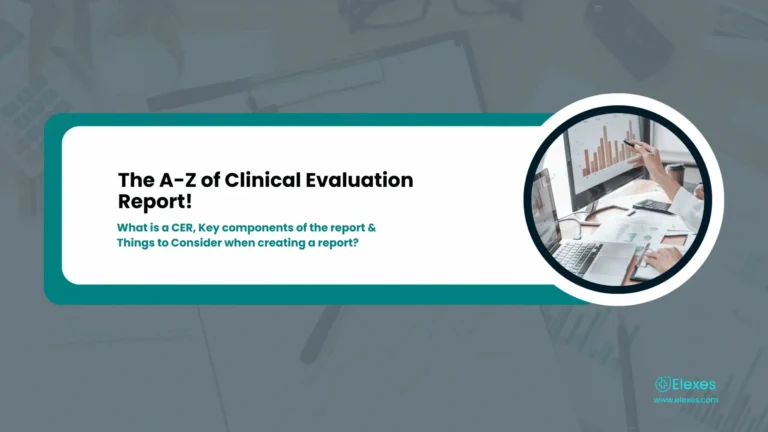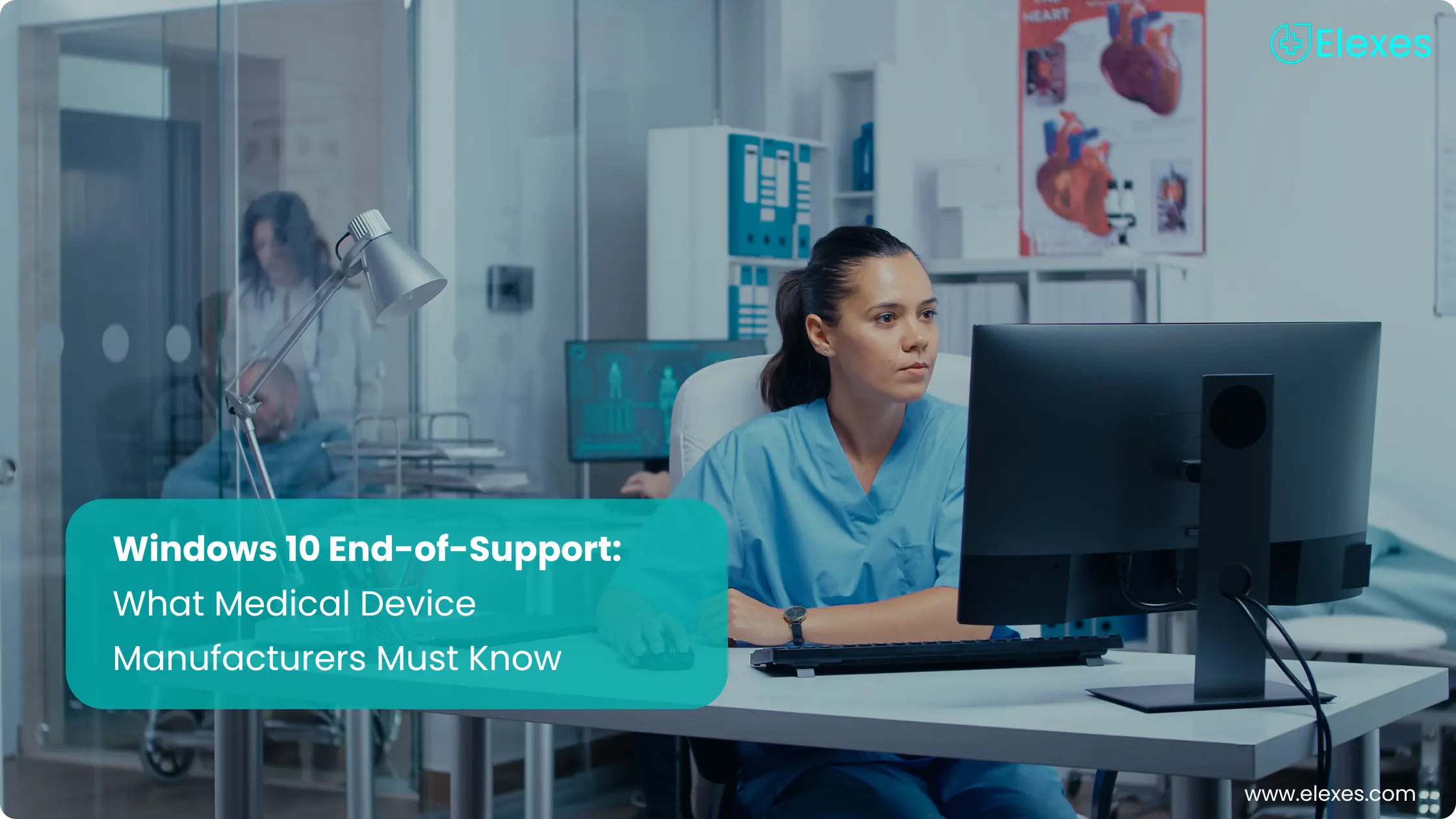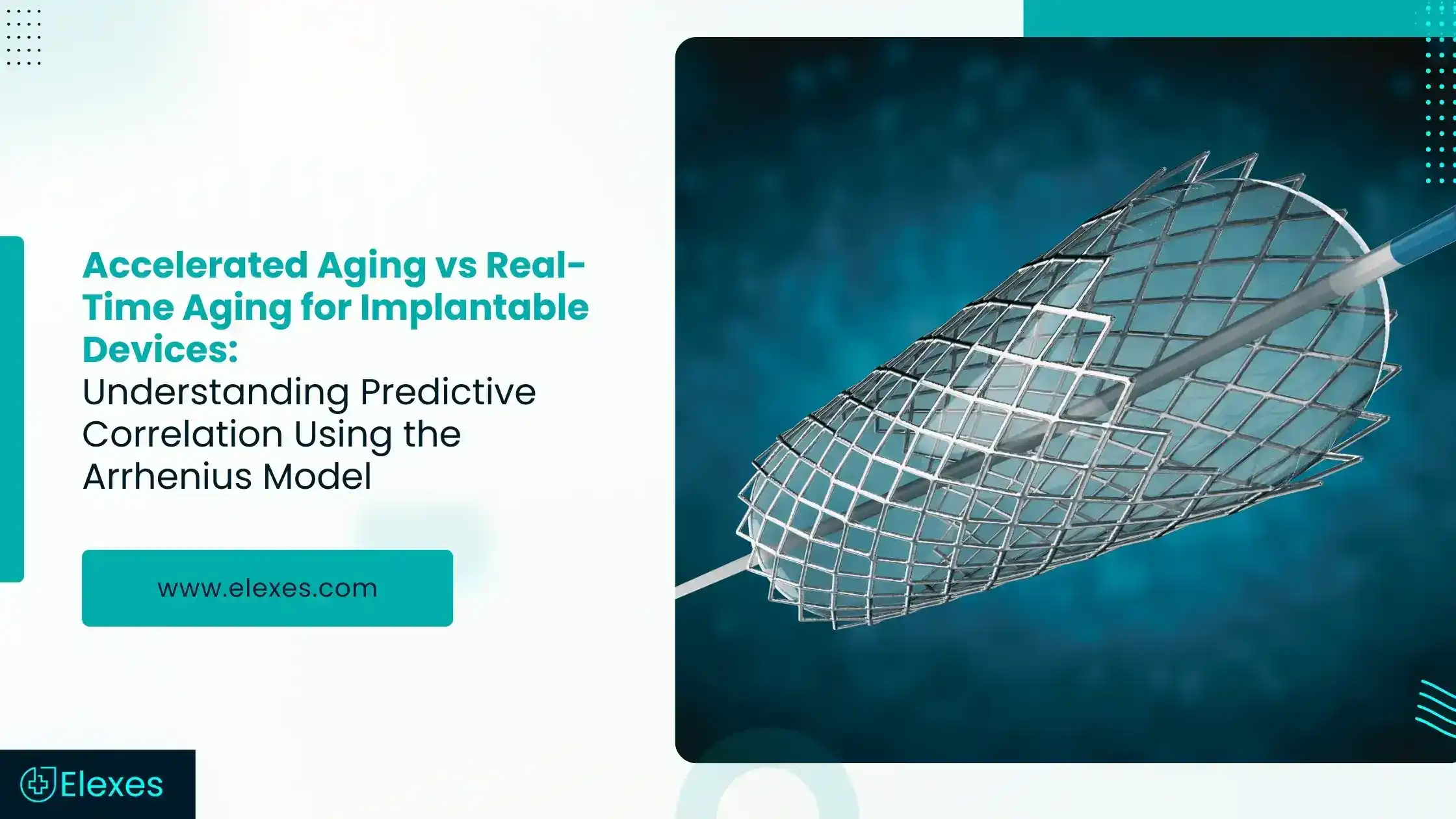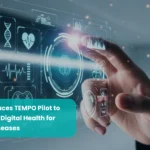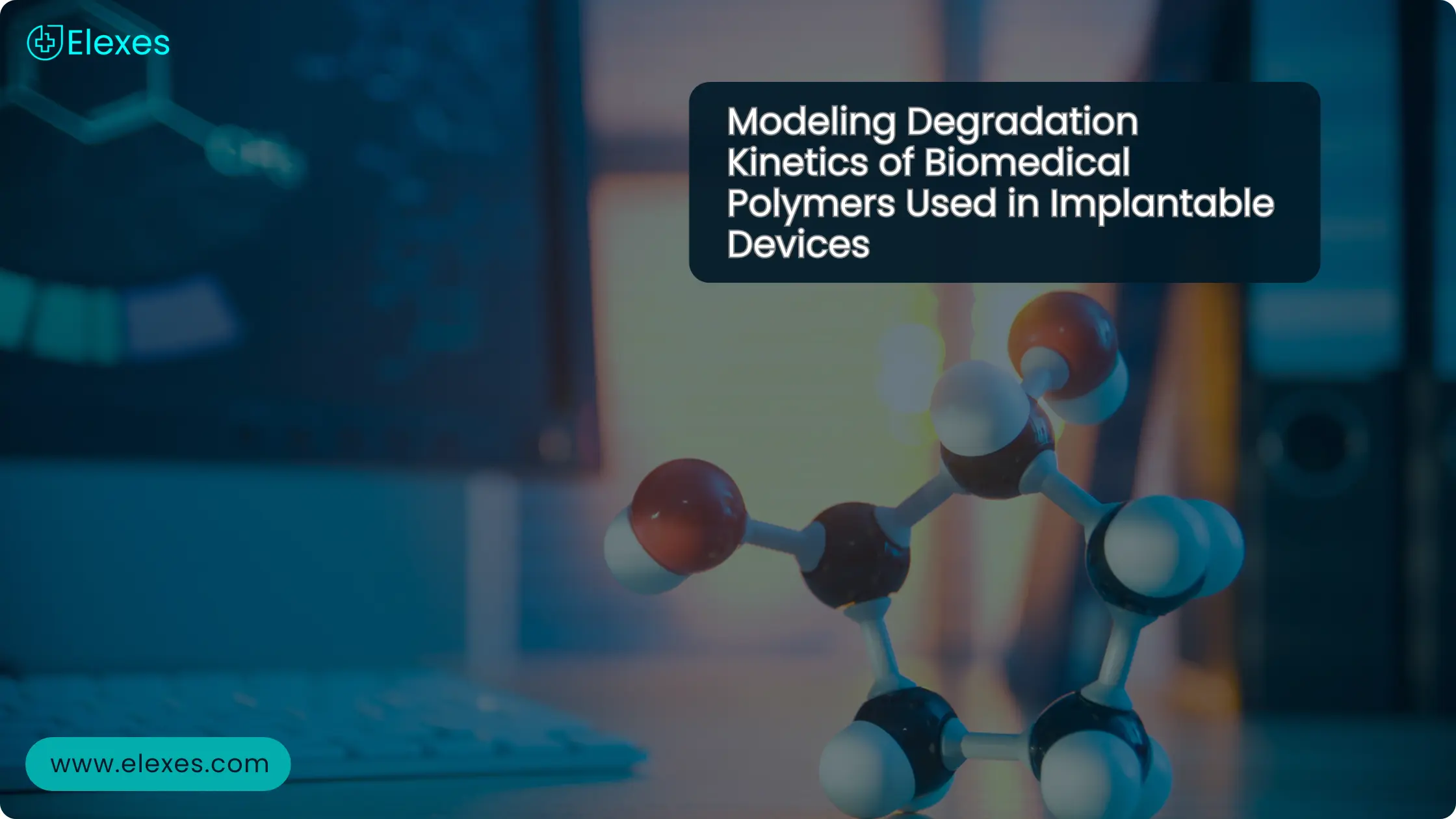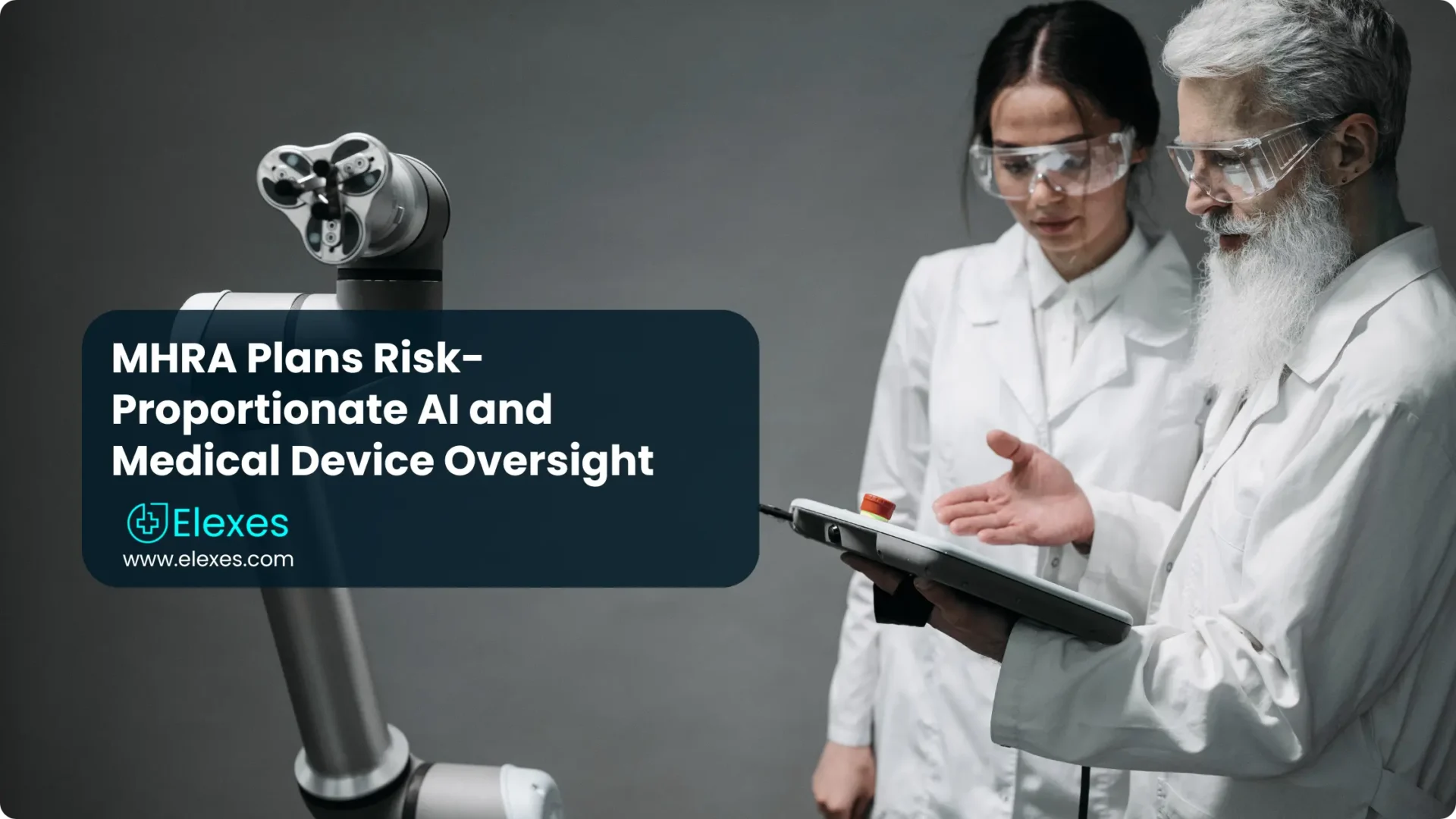Clinical Evaluation Report: Essential Components You Must Include
Have you ever questioned the safety of the product you’re using? Curious about how that safety is ensured? Wonder where all the complaints and feedback actually go? The answer to all of this lies in a Clinical Evaluation Report (CER).
A Clinical Evaluation Report (CER) documents the clinical data of a medical device and helps in assessing the safety and efficacy of the medical device’s performance. This report is vital to support design validation and includes the clinical data, analysis, appraisal of the data, and conclusions on the safety and efficacy of the device.
“A goal without a plan is only a wish” ~ Parul Chansoria, Founder Elexes
A comprehensive CER is a key component to the CE Marking
As everyone consistently acknowledges the interconnection between design and clinical success, Regulators around the world are ramping up expectations for clinical evaluation of medical devices. This is very evident from the increasing emphasis on clinical data and its appraisal in regulations and MEDDEV 2.7/1.
According to the MEDDEV 2.7/1 Revision 4 (June 2016), a CER should summarize the intended use, residual risks, and benefits and should be a stand alone document. CER should be prepared to take into account the state of the art, substantial equivalence to preexisting devices in the market, and should be evidence in line with the claims made for the device. This is a live document and should be updated with the risks associated with the use of the device as Manufacturers become aware of them at the post-market stage.
If approached systematically, a CER can take less time to generate and can form a strong basis of device’s safety and efficeny.
What are the key components of a clinical evaluation report (CER)?
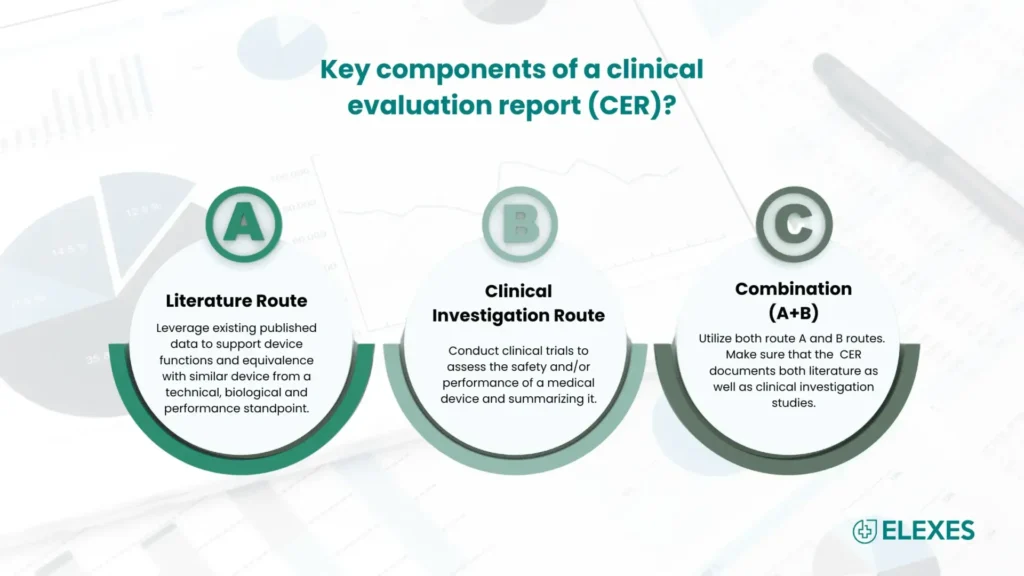
Things to consider while creating a clinical evaluation report
When you are creating a clinical evaluation report, there are several things that you must consider. Below, we have mentioned several different component that when put together can create an effective, reliable, and efficient CER for your medical device.
🔘 State of Art Section
State of the Art section in CER should include:
✔︎ Current knowledge of the medical field
✔︎ Applicable standards and guidance.
✔︎ Brief summary of the benchmark devices
✔︎ Available medical alternatives
✔︎ Clinical background and hazards.
🔘 Equivalence
To demonstrate equivalence, the device under evaluation must be compared to another based on clinical, biological, and technical characteristics. There should be no difference in clinical safety and performance between the two devices.
🔘 Risk Benefit Analysis (CER Essential)
A thorough discussion of all potential risks must be included, along with analysis of the available data to determine the device’s safety and performance. Benefits and risks tied to the device’s usage should be clearly outlined to help understand any plausible hazards involved.
🔘 Evaluator’s Qualification
Only a qualified individual should conduct the clinical evaluation. This expert must possess deep knowledge of the device’s technology and application, supported by a higher education degree and 5–10 years of documented professional experience. Any deviation from this standard must be justified and documented within the CER.
🔘 Frequency of the CER Updates
Updates aren’t optional—especially for higher-risk devices. Reports should be reviewed at least once a year for high-risk products and every 2–5 years for those with lower risk profiles, depending on regulatory expectations and post-market findings.
As per the new EU regulatory requirements the safety and efficacy of the device should be based on some clinical data (literature or study) as it helps in identifying and scrutinizing the risks involved in the usage of the device, and in turn streamlines the process for CE marking. To timely receive your CE, check where your CER stands.
About Us
Elexes helps medical device manufacturers, aspiring for CE marking, by creating an organised Technical File of which a comprehensive Clinical Evaluation Report (CER) is a critical part. For any questions/comments please write to jennifer@elexes.com

